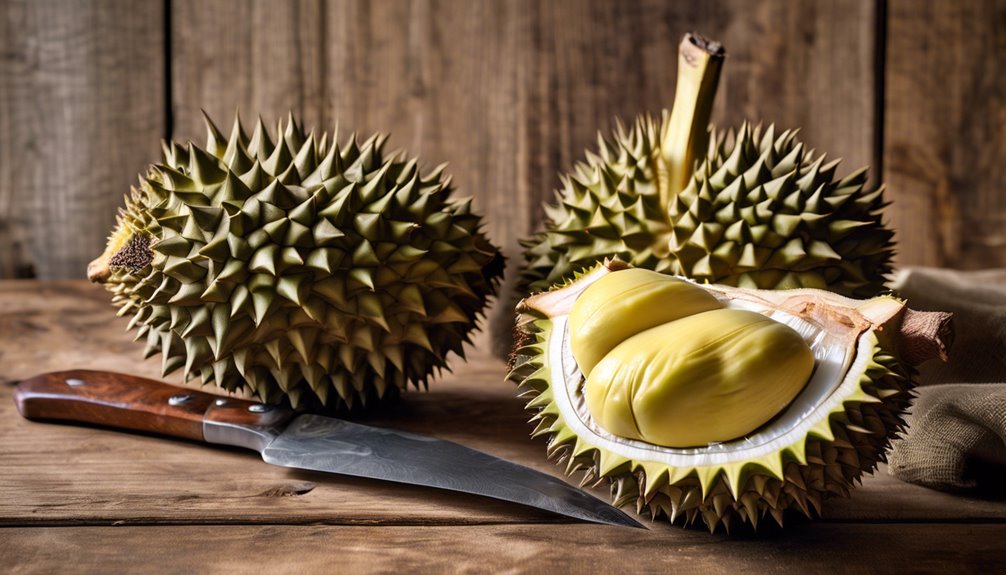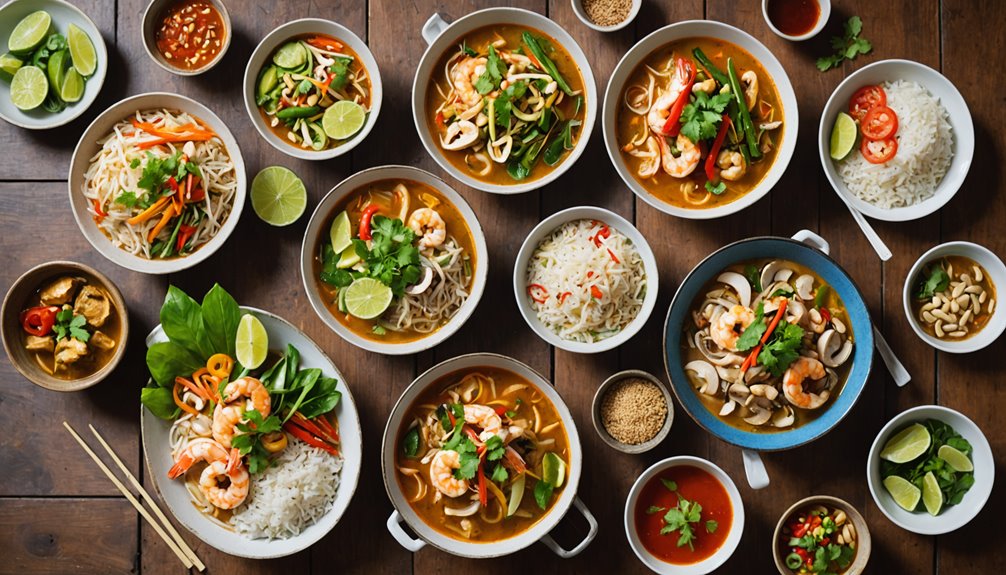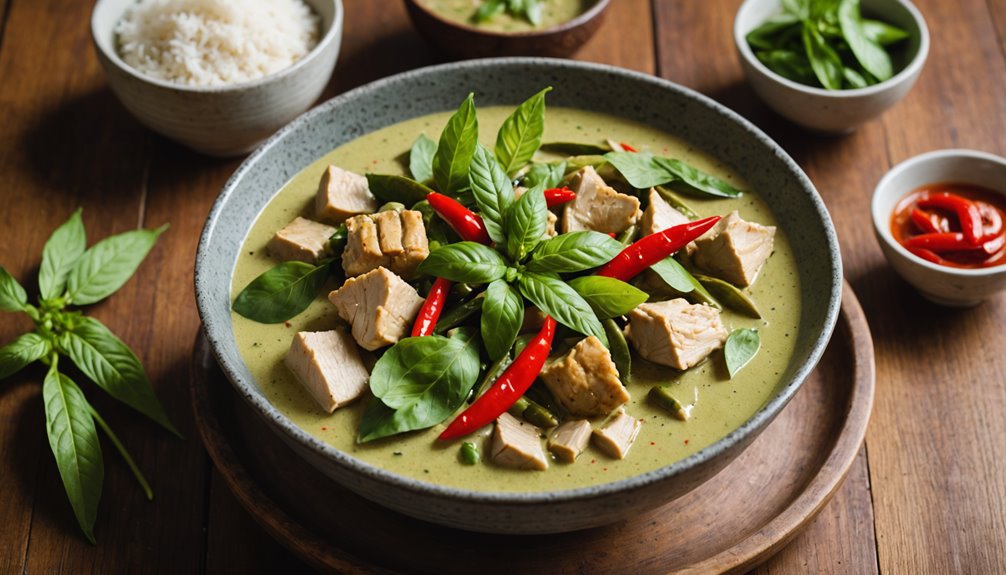To eat a durian, consumers must first select a ripe specimen that yields slightly to pressure and exhibits natural seams. Using protective gloves, the fruit should be placed stem-down and carefully opened along these seams with a paring knife or cleaver. The creamy flesh pods can then be extracted manually or with a spoon and eaten directly from the seed. While the fruit’s strong aroma requires careful handling, its complex flavors and high nutritional content make it a rewarding culinary experience to master.

While durian is renowned as the “King of Fruits” throughout Southeast Asia, its intimidating appearance and distinctive aroma can make first-time consumption challenging for the uninitiated. The fruit’s thick, spiky exterior requires careful handling, and consumers should select specimens that yield slightly to pressure and emit a strong odor, indicating ideal ripeness. Protective measures, such as gloves or towels, are essential when handling the fruit to avoid injury from its sharp thorns.
The process of accessing the fruit’s flesh begins with the removal of the stem to create a stable base. Consumers should locate the natural seams or cracks in the shell, which indicate both ripeness and potential entry points. A paring knife can be inserted into these seams to create leverage, though particularly resistant specimens may require the application of a cleaver. Early ripening Thai durians offer complex flavor profiles compared to fully ripe ones. Care must be taken not to cut too deeply, as this could damage the valuable flesh within.
Once opened, the creamy flesh pods can be extracted manually or with a spoon. The flesh may be consumed directly, either by sucking it from the seed or biting into it. However, moderation is essential, as durian contains 144 calories per 100 grams and can cause digestive discomfort if consumed excessively. The fruit often pairs excellently with dark Thai coffee for breakfast. The seeds should not be eaten raw due to their toxicity, though they become edible when properly cooked through boiling, roasting, or frying.
Durian’s versatility extends beyond fresh consumption, as it can be incorporated into various culinary applications. The flesh can be blended into smoothies, transformed into desserts such as ice cream or sticky rice preparations, or even integrated into savory dishes. The fruit’s notorious aroma, often compared to cheese or onions, necessitates careful handling and storage in airtight containers, particularly as its potent smell has led to restrictions in many public spaces across Asia.
The fruit’s significant nutritional profile includes high levels of iron, vitamin C, potassium, and dietary fiber, making it one of the most nutrient-dense fruits available. Its cultural significance in Southeast Asian countries, combined with its versatility in both fresh and processed forms, has established durian as a celebrated, albeit controversial, culinary ingredient.
Frequently Asked Questions
Why Does Durian Smell so Strong Even Through Its Thick Shell?
Durian’s intense odor penetrates its thick shell due to the high concentration of volatile sulfur compounds, particularly ethanethiol, which are produced through enzymatic activity during ripening.
The fruit’s 46,000 genes include numerous sulfur-pathway regulators that become highly active as the fruit matures, continuously generating these compounds.
Despite the protective husk, the chemical volatility of these sulfur-based molecules enables them to diffuse through the shell’s cellular structure.
Can Pregnant Women Safely Eat Durian Fruit?
Pregnant women can safely consume durian fruit in moderation, as it provides essential nutrients including folate, vitamins, and minerals beneficial for fetal development.
However, medical supervision is recommended for those with gestational diabetes or hypertension due to the fruit’s high sugar content.
While durian offers nutritional benefits, excessive consumption may lead to complications such as elevated blood sugar levels or excessive weight gain during pregnancy.
How Long Can You Store Durian in the Refrigerator?
Storage duration for durian varies based on its form and storage conditions. Whole durians remain fresh for 5-7 days when refrigerated, with the outer shell providing natural protection.
Cut durian flesh, however, has a shorter shelf life of 2-3 days when stored in airtight containers. Proper temperature control and packaging are essential, as factors like ripeness, container type, and temperature fluctuations greatly impact storage longevity.
Signs of spoilage include off-smells and texture changes.
What Are the Different Varieties of Durian Available?
Southeast Asian durian varieties include Thailand’s popular Monthong and Chanee, comprising 41% and 33% of Thai cultivation respectively.
Malaysia and Singapore favor varieties like Musang King, known for its creamy sweetness, and XO (Black Thorn), appreciated for its complex flavor profile.
Indonesian cultivars include Sri Gading, Tembaga, and Pelangi, with the latter featuring distinctive multi-colored flesh and varying taste profiles.
Why Is Durian Banned in Many Hotels and Public Transportation?
Durian is banned in hotels and public transportation primarily due to its intense, sulfurous odor caused by volatile compounds like mercaptans and ethyl (2S)-2-methylbutanoate.
The pungent smell, often compared to raw sewage or gas leaks, can persist for days and has triggered false emergency evacuations.
These restrictions reflect public health concerns, as the overwhelming aroma can cause discomfort, nausea, and significant disruption in enclosed spaces, while creating costly cleaning challenges for businesses.
References
- https://www.youtube.com/watch?v=rff2HTERlHM
- https://praneesthaikitchen.com/2011/09/19/durian-what-is-it-how-to-open-it/
- https://www.durianhaven.com/how-to-eat-fresh-durian.htm
- https://www.tilda.com/en-mt/blog/ingredient-guide/a-guide-to-durian/
- https://www.youtube.com/watch?v=1O_9YnHkzl4
- https://phys.org/news/2020-02-durian.html
- https://modernfarmer.com/2020/03/we-now-know-what-makes-durian-so-stinky/
- https://www.idtdna.com/pages/community/blog/post/what-makes-the-durian-smell-so-bad
- https://nouveauraw.com/reference-library/where-our-food-comes-from-2/durian-get-the-stink-out-of-here/
- https://www.popsci.com/why-durian-smells-bad/









